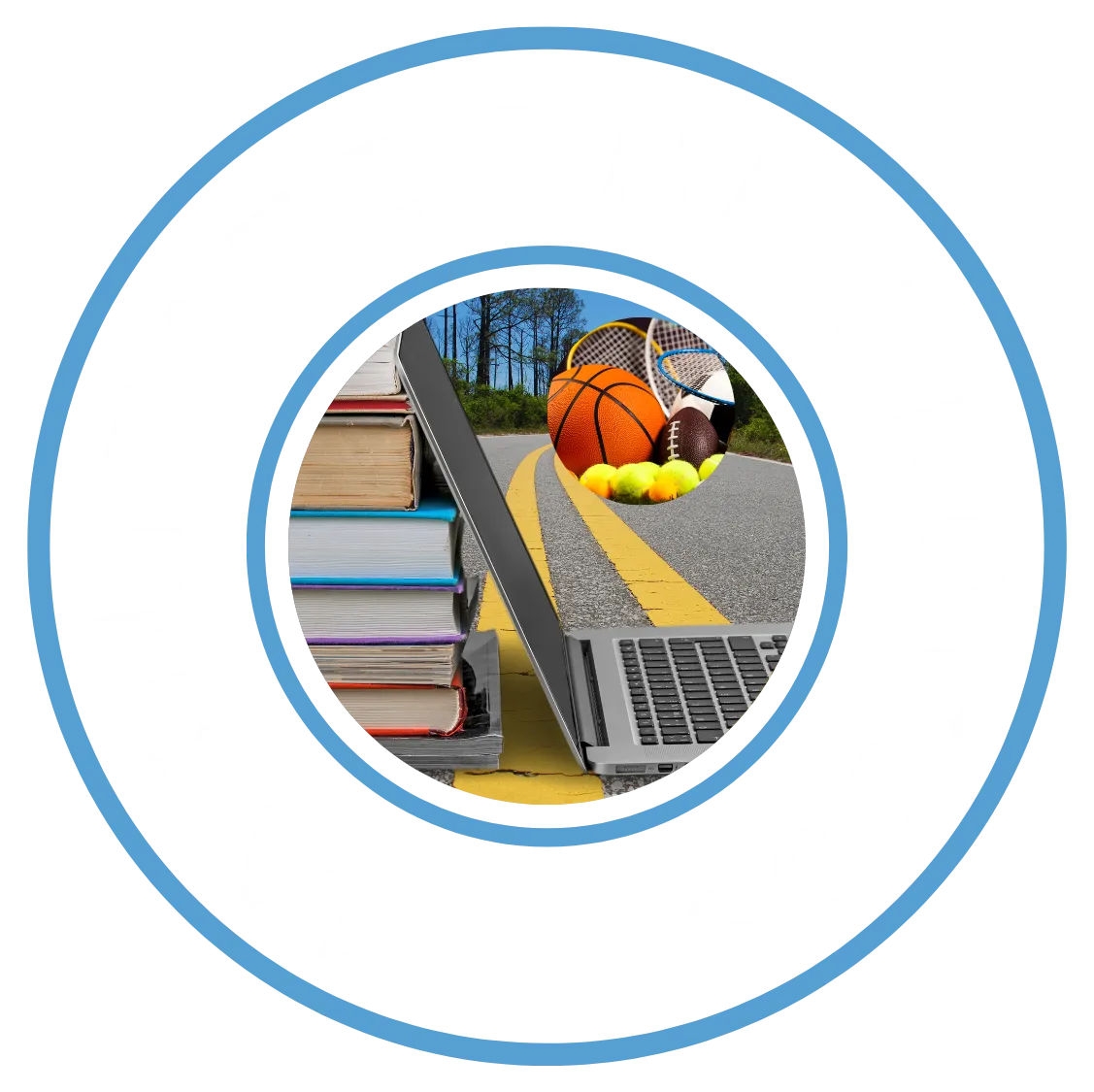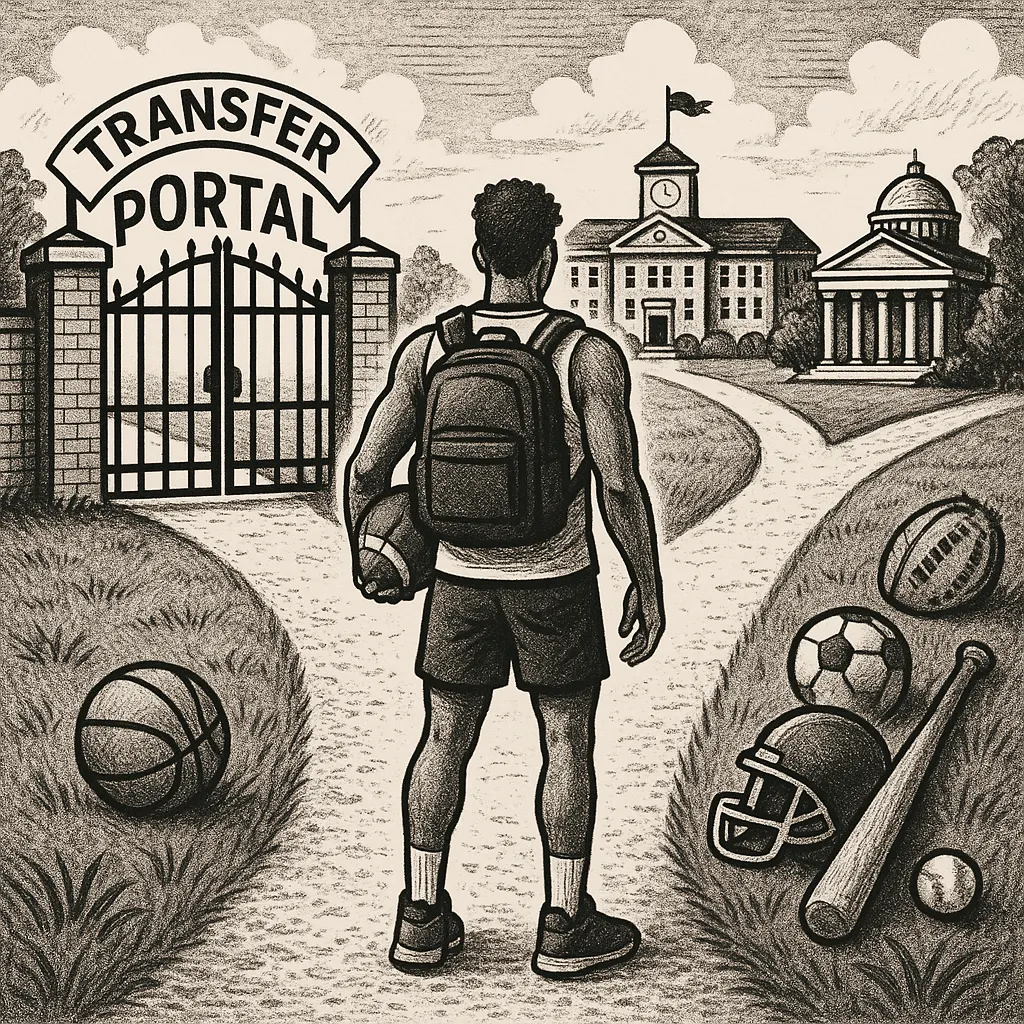

Your Success, Our Priority
Browse our articles below
Make sure to request our FREE Role Player Guide to Recruiting
Click the more stories button for additional articles

Transfer Portal Closure Changes the Game for Student Athletes
Transfer Portal Closure Changes the Game for Student Athletes
Every year, student athletes weigh life-changing choices, but few moments carry the urgency and impact of transfer portal closure. With new NCAA student athlete transfer rules shaping when and how athletes can move between schools, knowing how to act before the portal closes has become a major challenge. Decisions now come with narrower windows, and missing a deadline can reshape the course of an academic and athletic career.
Today’s transfer environment demands clarity about current transfer portal timelines, strategies for communication with coaches and family, and a clear understanding of eligibility requirements. For those thinking, “I want to transfer back to my old school,” or searching for answers about when and how to notify coaches and family, the current transfer timeline affects every step. Navigating these rules with confidence, while keeping academic and athletic futures intact, requires careful planning and trusted insight.
Recent Transfer Portal Closure Dates and What They Mean
The NCAA introduced the student athlete transfer portal to give players more freedom and transparency. However, as of 2024, portal closure dates are stricter for most sports. Each division and sport has its own window for student athletes to enter the portal, making timing more important than ever. For Division I football, the portal opens for 30 days after the regular season and for 15 days in the spring. Basketball has a 45-day window after the season ends.
Missing these dates means an athlete cannot transfer until the next window, potentially losing a season or delaying academic goals. Athletes often express frustration if they’re caught by surprise near the portal’s closure. Checking the latest NCAA calendar and understanding how these deadlines affect eligibility is essential for making informed choices. Schools also use the closure period to stabilize rosters, preventing last-minute departures that could hurt team success.
For student athletes at other levels or in different sports, portal closure dates may vary, but the pressure remains. Those thinking about a move, whether due to playing time or personal reasons, should monitor these windows closely. Administrative offices and athletic departments post the official transfer dates, but proactive athletes also consult compliance officers to confirm their eligibility before acting.
Understanding NCAA Student Athlete Transfer Rules
The NCAA student athlete transfer rules have evolved to prioritize both the athlete’s freedom and the integrity of college sports. The main purpose of these rules is to ensure transparency while maintaining competitive balance. Once an athlete’s name is entered in the student athlete transfer portal, coaches at other schools can reach out, but the process is strictly regulated by the NCAA’s guidelines.
For many, understanding the one-time transfer exception matters most. This rule allows an athlete to transfer once without sitting out a year, as long as academic standing and eligibility criteria are met. However, athletes transferring a second time risk losing a season of competition unless they qualify for a waiver. NCAA student athlete transfer rules also require athletes to notify their current school in writing before the portal deadline. The school then enters the name in the portal within two business days, starting the process officially.
Graduate transfers have their own set of rules, often with more flexibility, but still must adhere to portal closure dates and communication policies. Schools can set additional academic standards beyond the NCAA minimum, so athletes should consult their campus compliance office to avoid surprises. In all cases, following the published procedures increases the chance of a successful and timely transfer, avoiding eligibility setbacks.
How the Transfer Portal Closure Impacts Eligibility
Eligibility is closely tied to the timing and accuracy of transfer submissions. If an athlete misses the portal window, sitting out for a semester or a full season is a real risk. This delay can interrupt both athletic participation and academic progress toward graduation, making careful planning critical.
Those with aspirations to say “I want to transfer back to my old school” face additional hurdles. Re-admittance into a previous program often depends on roster spots, academic standing, and compliance with the latest student athlete transfer rules. Failure to meet the portal deadlines limits these opportunities and may result in lost scholarships or financial aid. Each missed deadline carries consequences, emphasizing the need to keep track of every important date.
High-profile cases in recent years highlight these challenges. Student athletes who miss the window often share stories of regret, wishing they had acted sooner. That’s why planning well ahead of portal closure dates improves eligibility outcomes and reduces stress. Connecting with compliance officers, reviewing transcripts, and confirming academic standing before entering the portal maximizes the odds of a smooth transition.
Addressing “I Want to Transfer Back to My Old School”
Transferring back to a previous school is appealing for many athletes facing challenges at their new program. The question “I want to transfer back to my old school, is it possible?” comes up frequently, but the answer depends on several factors. Athletic departments and compliance staff review each case individually, and re-admittance is only granted if the athlete satisfies NCAA student athlete transfer rules and the original school’s policies.
Before starting the return process, athletes must confirm their academic record remains in good standing and that their previous team has an available roster spot. Coaches also consider the athlete’s reputation and the reasons for the original departure. Entering the transfer portal and communicating intentions openly helps keep the path back clear.
For those committed to returning, a conversation with the compliance office ensures a shared understanding of current eligibility requirements and scholarship options. Sometimes, academic or athletic progress at the new school can impact eligibility to return, so gathering documentation and advice is crucial. Athletes who keep their academic record strong often have more flexibility if looking to return to a previous program.
When Should a Student Athlete Tell Their Coach About Transferring?
Timing is everything when it comes to discussing a transfer with a coach. The question “When should I tell my coach I want to transfer?” is a difficult one for many student athletes. Early communication is encouraged, allowing the coach and athletic department to adjust roster plans and provide support during the transition.
It is recommended to schedule a meeting as soon as the transfer is being seriously considered. This shows respect for the program and helps maintain positive relationships. Many coaches appreciate honesty and transparency, which can lead to stronger support during the transfer process. Delaying the conversation risks missed opportunities or negative perceptions.
Before the meeting, athletes should prepare to discuss their reasons, future goals, and academic status. Coaches might offer perspective on the decision or suggest solutions before a formal transfer. For athletes who intend to enter the student athlete transfer portal, clear and direct communication keeps the process smooth and reduces misunderstandings.
How to Tell Parents About the Plan to Transfer
The thought “How do I tell my parents I want to transfer?” weighs heavily on many student athletes. Family support is crucial during stressful transitions, but the conversation often brings up concerns about academics, scholarships, and adjusting to a new environment. Creating a thoughtful communication plan can reduce worry and help families become strong advocates for the athlete.
Parents appreciate honesty and clear reasoning. Starting with the motivations for transferring and sharing research about the new program prepares them for the change. Many athletes benefit from including their parents early in the process, keeping them informed about deadlines, academic requirements, and the pros and cons of each option.
To guide this conversation, consider these steps:
Schedule a calm time for discussion
Share reasons for wanting to transfer, focusing on goals and well-being
Present facts about the student athlete transfer portal and timelines
Ask for support in researching options and preparing applications
Open dialogue builds trust and increases success when navigating NCAA student athlete transfer rules and portal deadlines.
Key Steps for Entering the Student Athlete Transfer Portal
Successfully entering the student athlete transfer portal requires organization, communication, and attention to detail. Missing any step can slow down the process or even cost a season of eligibility. Athletes should start by confirming the official portal window dates for their sport and division, then follow the formal notification process set by their current athletic department.
After submitting a written transfer request, the compliance office has two business days to enter the athlete’s name in the portal. During this time, academic and eligibility checks are done to ensure there are no outstanding holds. Once in the portal, the athlete can begin communicating with coaches from other schools and evaluating offers.
To maximize the benefits of the portal, athletes should:
Update all academic records and transcripts
Confirm eligibility status with compliance officers
Discuss goals with family and current coaches
Research potential new programs, including scholarships and academic fit
Clear planning and proactive communication create the best chance for a smooth transfer experience.
Understanding the Risks of Missing Portal Closure Deadlines
Missing the portal closure deadline often leads to much larger consequences than athletes realize. Sitting out a full season disrupts athletic momentum and may affect progress toward graduation. Some programs may even fill remaining roster spots before the next portal window opens, limiting transfer options temporarily or permanently.
Lost scholarships are another serious concern. Many athletic scholarships are annual and tied to continued participation. Athletes unable to compete due to missed deadlines risk losing their financial aid, which can impact their academic plans as well.
Planning ahead, seeking out compliance assistance, and mapping out all deadlines reduces these risks. Student athletes who manage the process carefully usually find more opportunities and maintain their eligibility without interruption.
What to Know About Student Athlete Transfer Rules by Division
Each NCAA division maintains its own set of student athlete transfer rules and timelines. Division I and Division II follow the student athlete transfer portal system, with specific closure dates and academic requirements. Division III handles transfers with different paperwork and eligibility guidelines, focusing more on academic standing than athletics.
Graduate transfers and junior college athletes face separate sets of expectations. For those in the NAIA or other associations, portal rules may not apply, but transfer paperwork and eligibility checks are still required. Checking with the school’s compliance office and reviewing up-to-date NCAA resources helps prevent confusion and delays.
Whether transferring for playing time, academics, or personal growth, knowing the requirements for a specific division is key to a successful transition. Each rule exists to preserve academic integrity and support fair competition, ensuring that transfers benefit both the athlete and the institution.
Paving New Paths After the Transfer Portal Closes
Choosing to transfer shapes both academic and athletic journeys in lasting ways. Those who stay attentive to portal closure dates and NCAA student athlete transfer rules set themselves up for success, even when facing uncertainty or pressure. When the window closes, the possibilities do not vanish—they simply require new strategies and greater determination.
Confident, well-informed decisions made within the right timeline preserve eligibility and keep doors open for growth and achievement. The process encourages athletes to plan, communicate, and collaborate, all skills that serve well far beyond the field. In recognizing the demands and rewards of the transfer portal, student athletes learn to lead their own futures, one informed step at a time.
Resources & Community
🎯
Follow Facilitate The Process on Facebook
https://www.facebook.com/facilitatetheprocess/
🌐
Join Our Recruiting Community
🔗
Get Started Today

